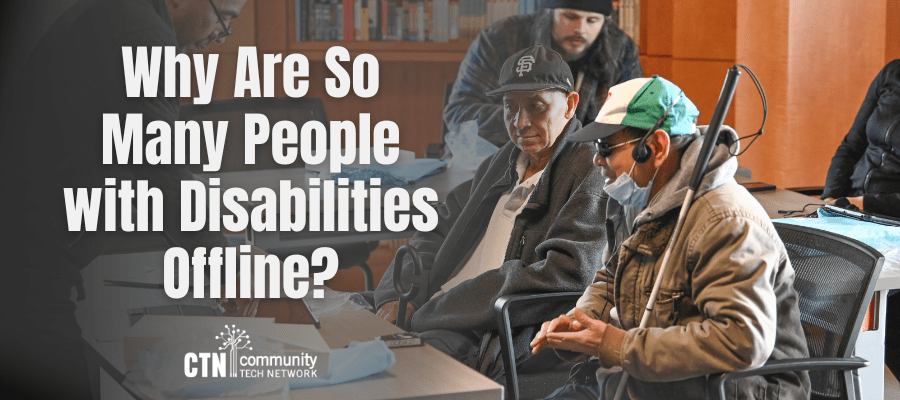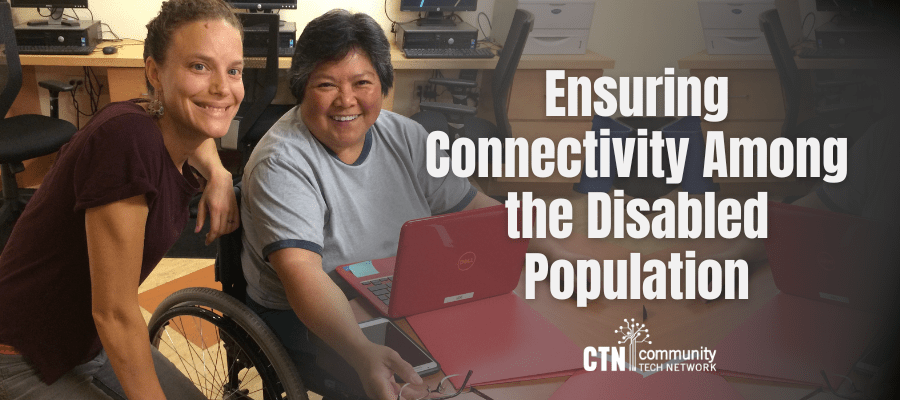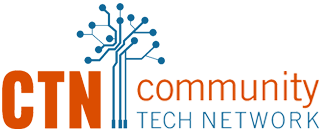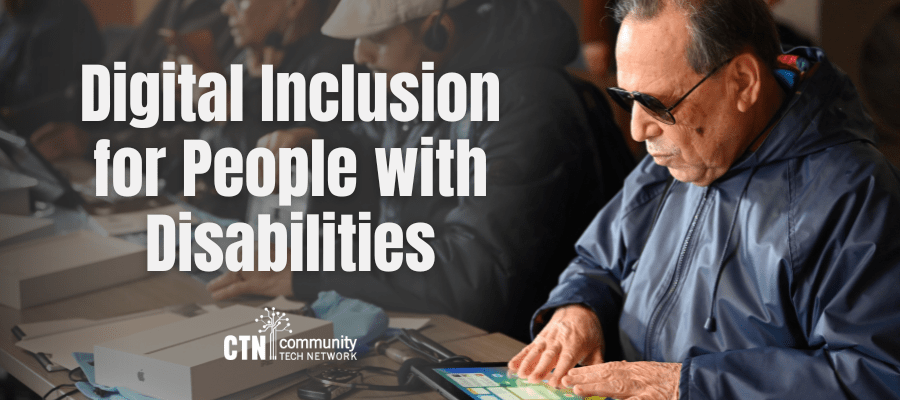More than 1 in 3 (38%) of adults living with a disability in the United States do not own a computer. Meanwhile, government statistics (PDF) show that “83.4 percent of people over age 15 without disabilities used the internet at home, work, school or elsewhere, while only 63.8 percent of people with disabilities did.” This raises important questions on disability digital divide.
These three important questions are:
- Why are people with disabilities less likely to be online?
- Why is getting folks with disabilities improved internet access important?
- What can be done about it?
Why Are So Many People with Disabilities Offline? Disability Digital Divide
 According to the U.S. Department of Labor (PDF), adults with disabilities report high costs of home internet (and assumedly, of devices) as their main barrier to getting online. This makes sense, as unemployment rates among differently abled groups are often more than double that of their peers. However, being offline only exacerbates the difficulties of finding meaningful employment (as will be discussed later).
According to the U.S. Department of Labor (PDF), adults with disabilities report high costs of home internet (and assumedly, of devices) as their main barrier to getting online. This makes sense, as unemployment rates among differently abled groups are often more than double that of their peers. However, being offline only exacerbates the difficulties of finding meaningful employment (as will be discussed later).
Additionally, accessibility plays a major factor. According to the Good Things Foundation’s Doing Digital Inclusion: Disability Handbook, “Colour, size and layout of text, and incompatibility with screen readers mean many websites are inaccessible to people with visual impairments. Other disabled learners can have difficulty holding a mouse, using keyboards, or sitting at a device for long periods of time.”
Meanwhile, location is important as well. Many individuals without home internet often visit local cafes or libraries to use the Wi-Fi, but folks with disabilities often have to consider issues relating to transportation, wheelchair ramps or lifts, and bathroom accessibility when visiting a venue.
Finally, there is the issue of digital skills training. Disability support staff who are not specifically trained in digital inclusion may not feel prepared to offer tech support to the people that they serve. Likewise, without the proper training, digital navigators and digital literacy instructors may not be equipped to adequately support disabled populations. For example, they may not know about the accessibility features on devices that their clients will need. Also, for instance, a digital skills instructor who does not speak American Sign Language (ASL) may not be of much use to the many members of the deaf community.
Why Is Ensuring Connectivity Among the Disabled Population Important?
 According to the Good Things Foundation, 23% of disabled people say they are “quite or very lonely” on a typical day. The internet can reduce this isolation by helping folks stay in touch with their family and friends and find community online, including, perhaps, with people who are in similar situations.
According to the Good Things Foundation, 23% of disabled people say they are “quite or very lonely” on a typical day. The internet can reduce this isolation by helping folks stay in touch with their family and friends and find community online, including, perhaps, with people who are in similar situations.
In addition, as mentioned previously, internet access can help individuals find more career opportunities through online job searching. It also provides the chance to work remotely. During the first year of the pandemic, “83.1 percent of workers with disabilities who use the internet at work remained employed, while only 75.9 percent of workers with disabilities who don’t use the internet at work remained employed.” — U.S. Department of Labor (PDF)
Of course, being online can also enable individuals to feel more independent. They can find information themselves and even order groceries online, without potentially having to rely on someone else to give them a ride. Being connected to the internet also opens the door to telehealth services, new learning opportunities, and the possibility to discover new hobbies and interests. These benefits are universal to everyone, as internet access is a human right.
So what can be done to bridge the digital divide for disabled populations? Stay tuned for part two to learn more.


Comments are closed.